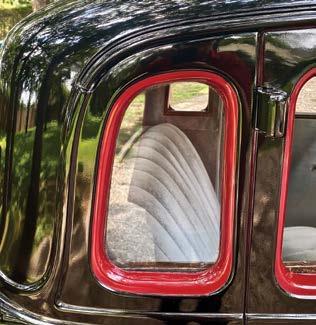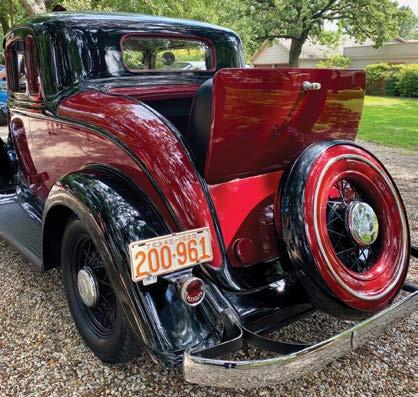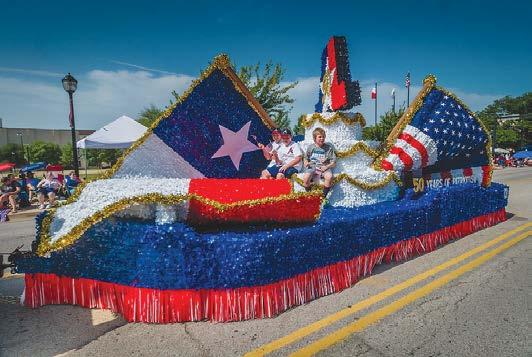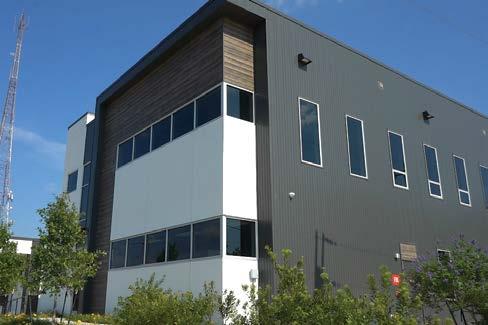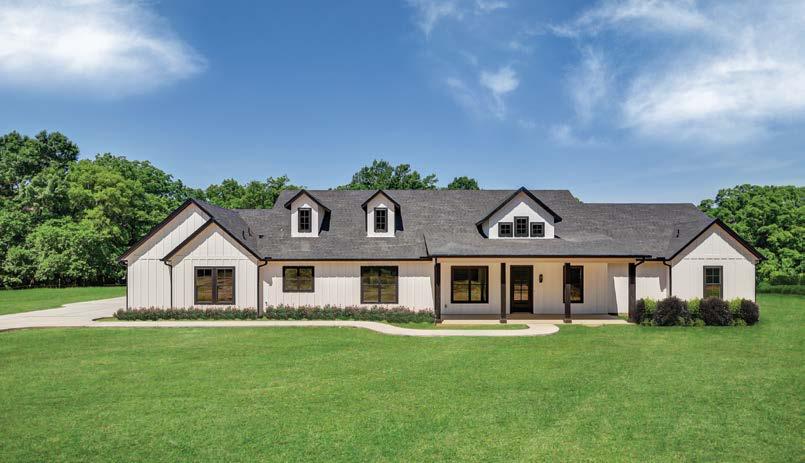
4 minute read
Innovation in action
from July 2020
Photos: Richard Greene
Jack and Sally Neal stand beside their 1933 Plymouth Model PC, which became a classic example of the dependable, affordable vehicles of its era.
Advertisement
This is the car that significantly ensured Chrysler’s survival • By Richard Greene
With the coming of the 1930s, the country’s big three auto makers were in full competition mode trying to build the kind of automobiles
that would fnd the most favor with the greatest number of the motoring public who were changing societal practices of transportation, given that just about everyone could aford a car.
Local residents Jack and Sally Neal are the proud owners of one of the best examples you will fnd of one of the more successful innovations coming from that era.
Their 1933 Plymouth Model PC is one of the breakthrough cars. Sporting the frst 6-cylinder engine emerging from the Chrysler Corporation’s engineering and design team, this vehicle sold for $545. It hit the mark in a big way. The company would continue to use this motor in many of its models for the next 27 years.
Jack explains how he landed this wonderful car last year and became only its third owner after it was frst delivered
to a dealer in Wilkes Barre, Pa., on Aug. 14, 1933, – yes, he has the original order: “I’m actually a
The Plymouth Model PC’s 6-cylincer The Plymouth Model PC’s 6-cylinder engine became a staple in Chrysler engine became a staple in Chrysler automobiles for 27 years. automobiles for 27 years.
Corvette guy – I’ve owned eight of them throughout the years. But, last year I set
out to see if I could fnd an older car, maybe a 1940 Ford Coupe like the frst car I learned to drive. Then I came across this Plymouth on eBay.
“The owner in Beaumont had acquired it from the family of the original owners in New York who had it fully restored. After seeing it in the video, I immediately wanted it, made the deal, and had it delivered.
“Sally says she loves this ‘little car’ more than any of my Vettes, and we enjoy driving it around. It runs perfectly even considering its age of 87. We’ve put it in a couple of
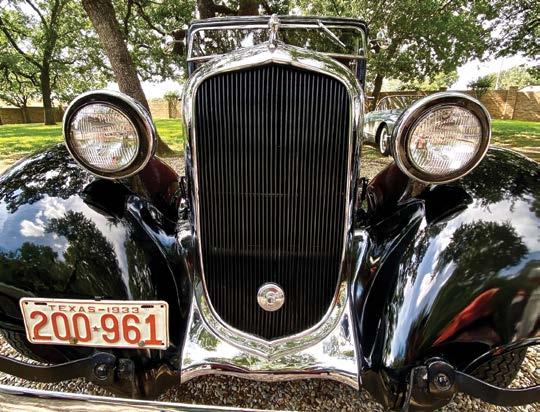
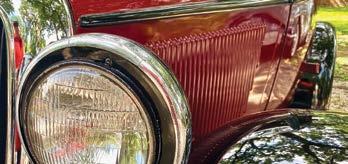
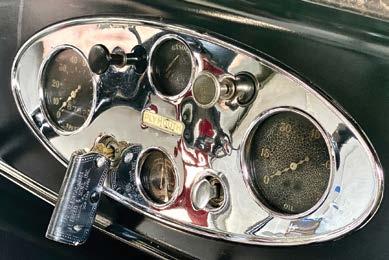
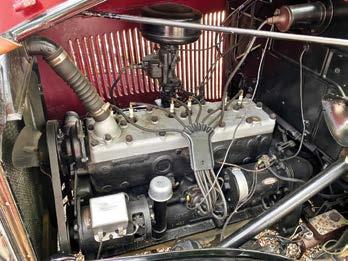
shows, and sometimes we join the Friday Cruise-In gathering in Southwest Arlington.”
The story of how Walter Chrysler managed to become the only automaker with a sales increase after the Great Depression had begun to take its toll, adds provenance to the Neal’s car – something that’s always highly desired by owners of classic cars.
The Plymouth Bulletin has laid out the details of one of the better examples of American entrepreneurship, risk taking and success that still serves to inspire anyone to reach for, or salvage, a dream.
Even while losing money as the country’s economy was tanking, Chrysler invested some nine million dollars to retool their plant for a 6-cylinder automobile. Doing so would result in the company’s emergence into second place in production and sales for 1933 and put Ford into the third place spot for the frst time in history.
The Bulletin account includes a description of how Walter Chrysler bought air time on the ABC radio system to describe the company’s plans for the new car. He had also purchased ads in some major newspapers apologizing to the public for taking up air time and interrupting people’s favorite radio programs.
As it turned out, many seemed to appreciate the opportunity to hear how the 6-cylinder innovation meant prestige to the buying public – giving them just what they wanted.
When introduced at Madison Square Garden in 1928, the Plymouth was Chrysler’s frst entry in the low-priced feld that had previously been dominated by Chevrolet and Ford. The new competitor came with, as a standard feature, hydraulic brakes that the competition didn’t ofer.
Then, when the 6-cylinder engine made its debut in 1933, Chrysler’s future was secured. The Big Three American automakers dominated the market with their most afordable automobiles.
Just a glance at the Neals’ car may result in mistaking it for either Ford’s Model A or Chevrolet’s Eagle and a comment that all three of the era “looked the same.”
Interestingly, you hear that often when today’s models are being discussed.
Maybe that’s because when car makers deliver winners, like they did in the midst of the Great Depression, every manufacturer develops their own version – at least the ones that want to secure their future among an ever-discerning market of consumers who know what they want.
